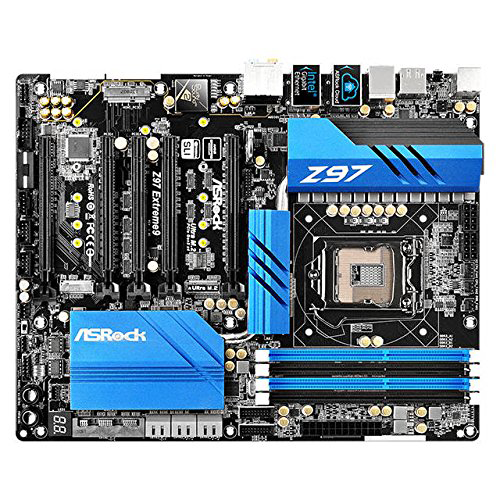Three Z97 Express Motherboards, $220 To $280, Reviewed
Benchmark Results
We set our benchmarks up to get the fairest results possible, going to great lengths to make sure power savings features are enabled and Intel Turbo Boost ratios are at factory defaults. Some manufacturers enable Turbo Boost “Enhancements” when XMP is enabled, so we even test with XMP disabled while using a memory set that defaults to our desired DDR3-1600 baseline. While small differences can be attributed to luck of the draw or slight variation in base clock, large performance gains tend to indicate cheating via unintended overclocks. Large losses usually indicate configuration problems, and we like to expose both issues whenever they occur.
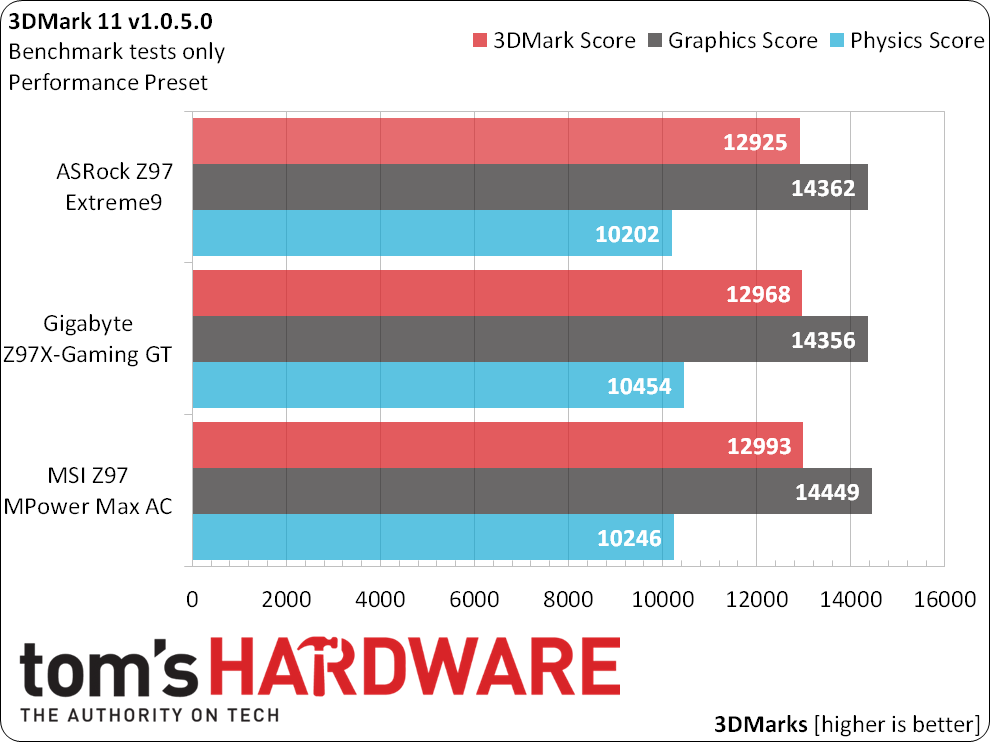
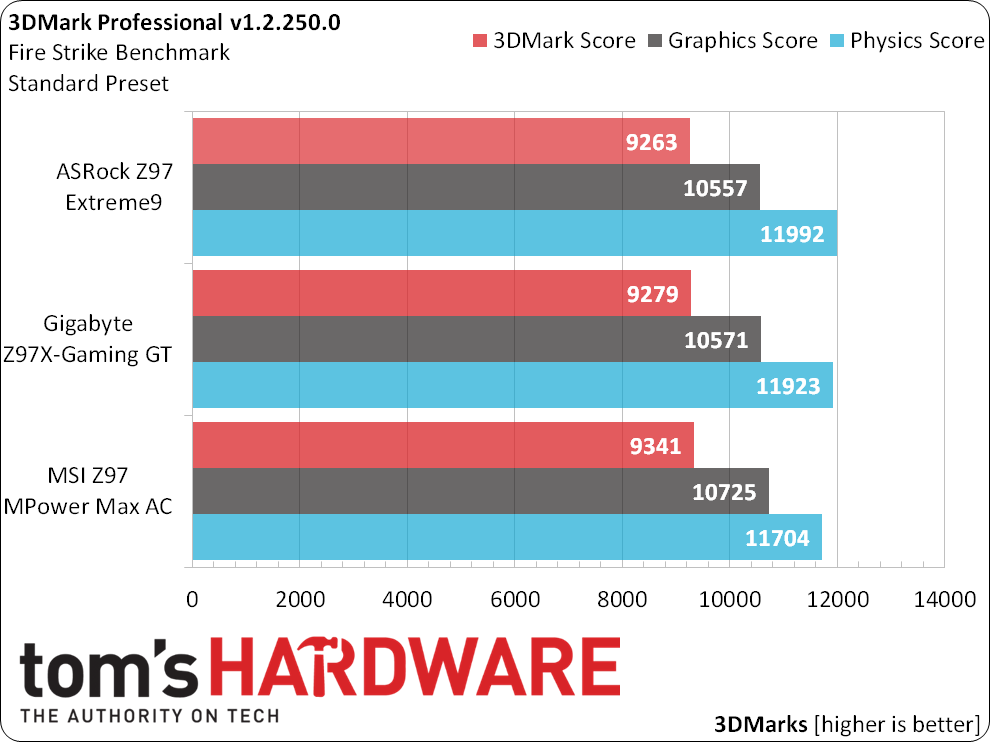
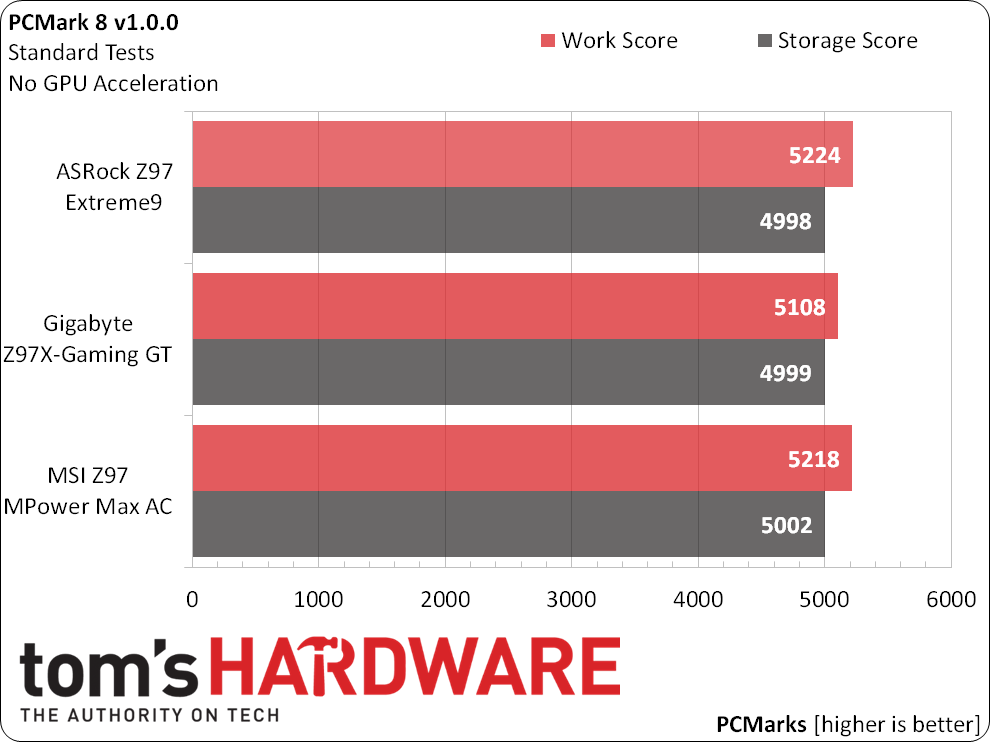
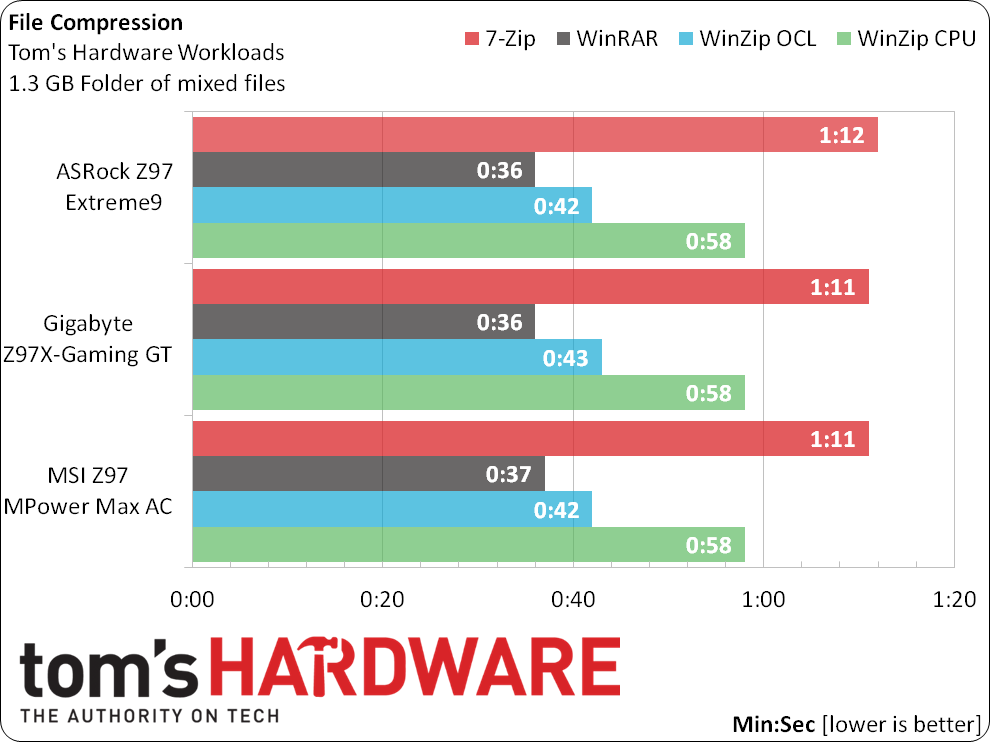
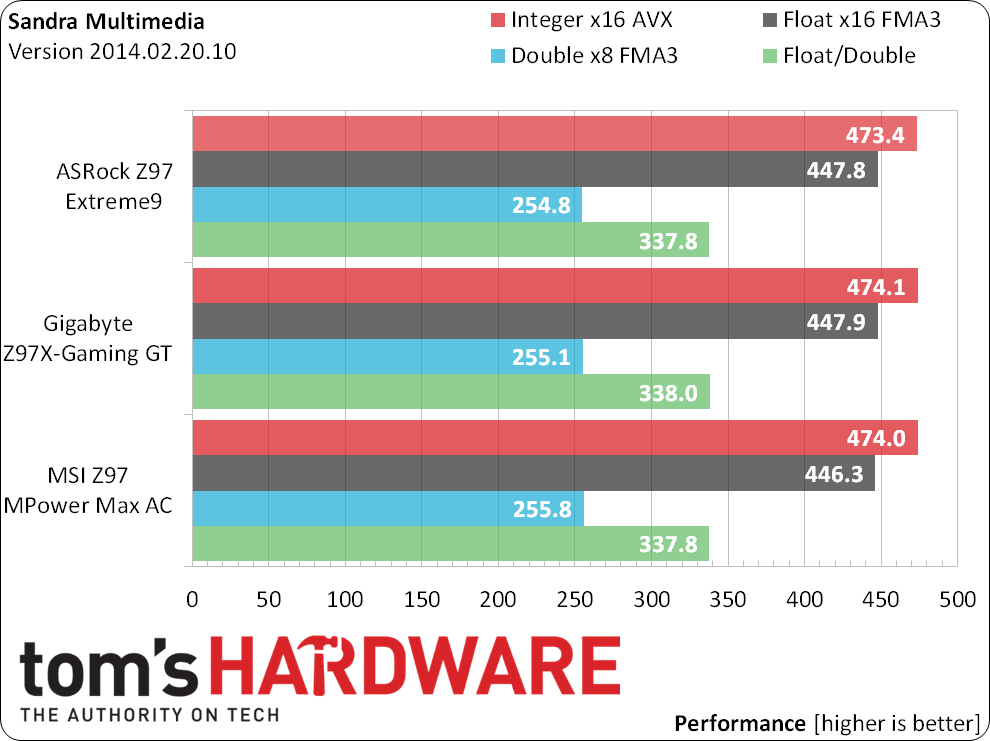
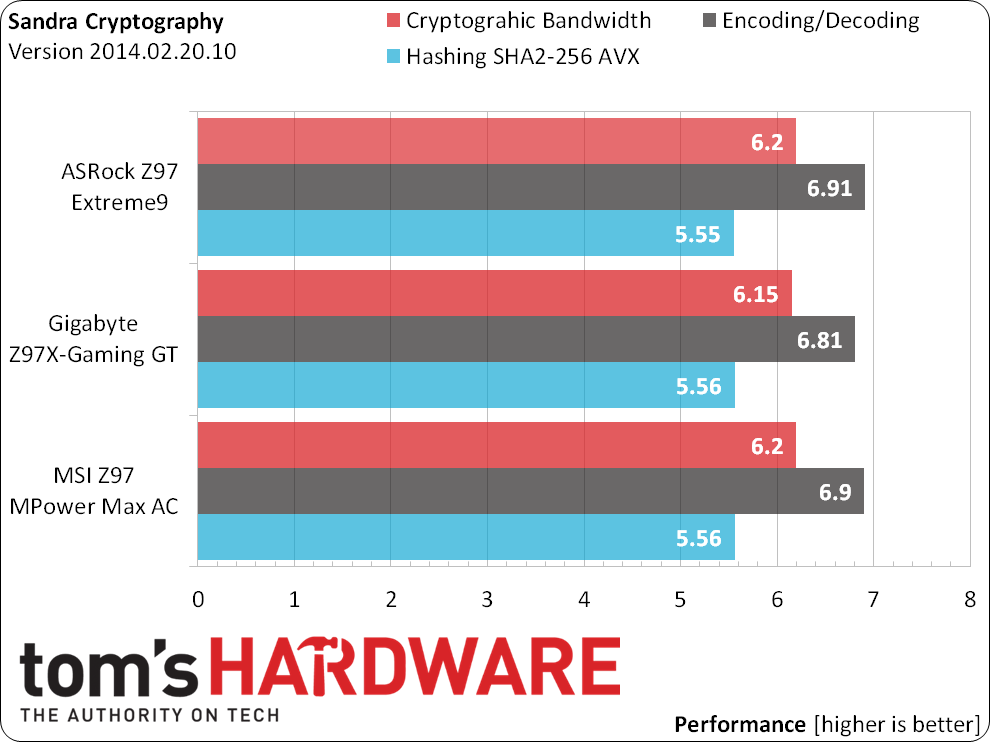
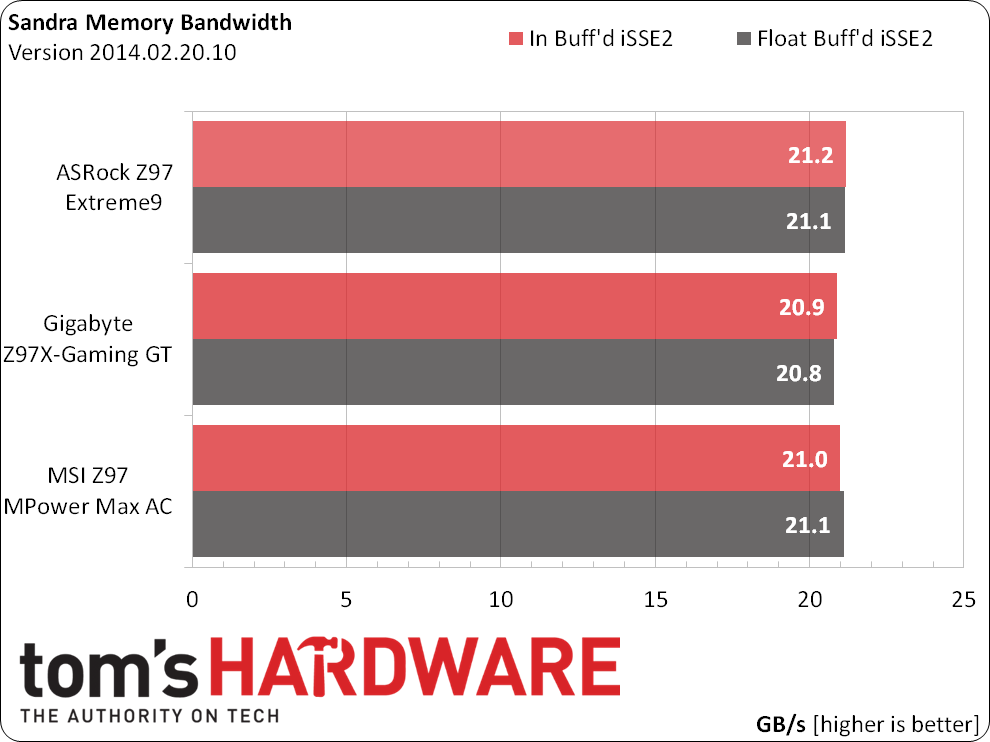
A small PCMark Work loss for Gigabyte’s Z97X-Gaming GT might have gone unnoticed, except that it’s also reflected in Sandra’s bandwidth-intensive Encoding/Decoding test and Sandra Memory Bandwidth. We’ll keep an eye out for how that affects any real-world tests.
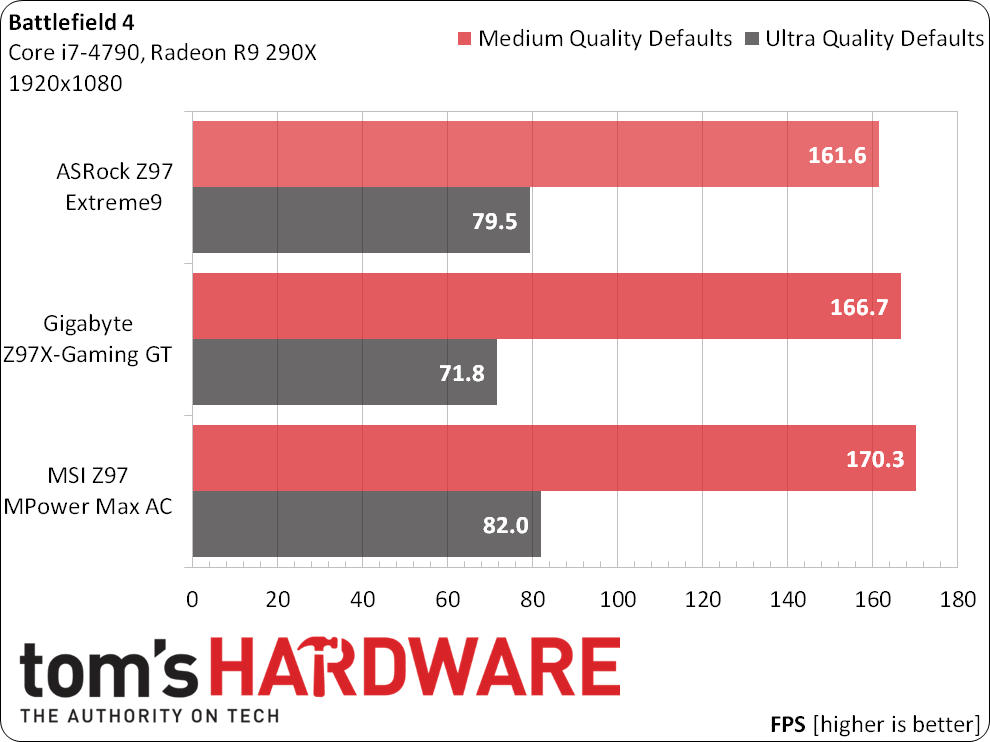
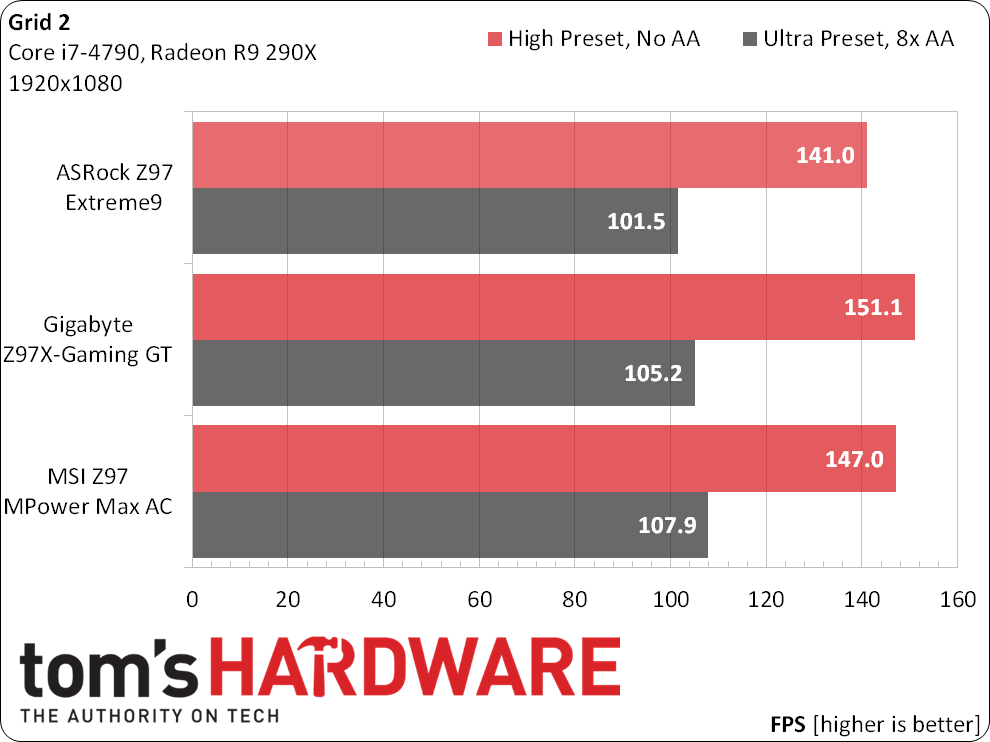

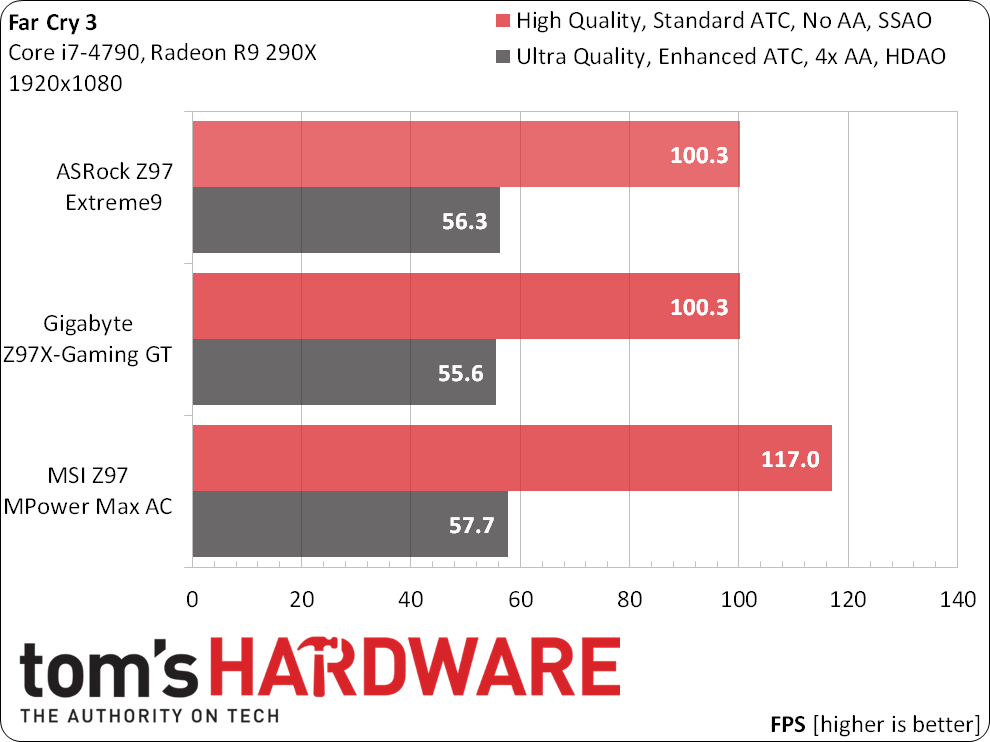
Except for a small bump for the Z97 MPower Max in Far Cry 3’s high-quality test, we don’t see any suspicious gaming results. While that one test doesn’t have much impact on performance averages, we’ll keep an eye out for additional Far Cry 3 oddities in our next round-up.
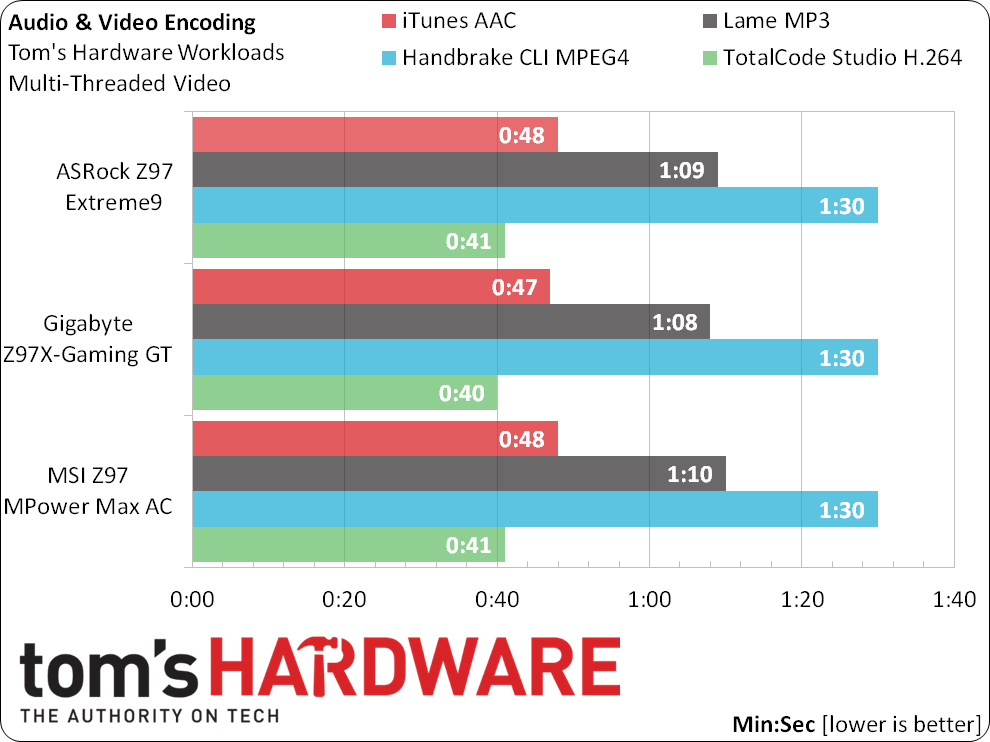
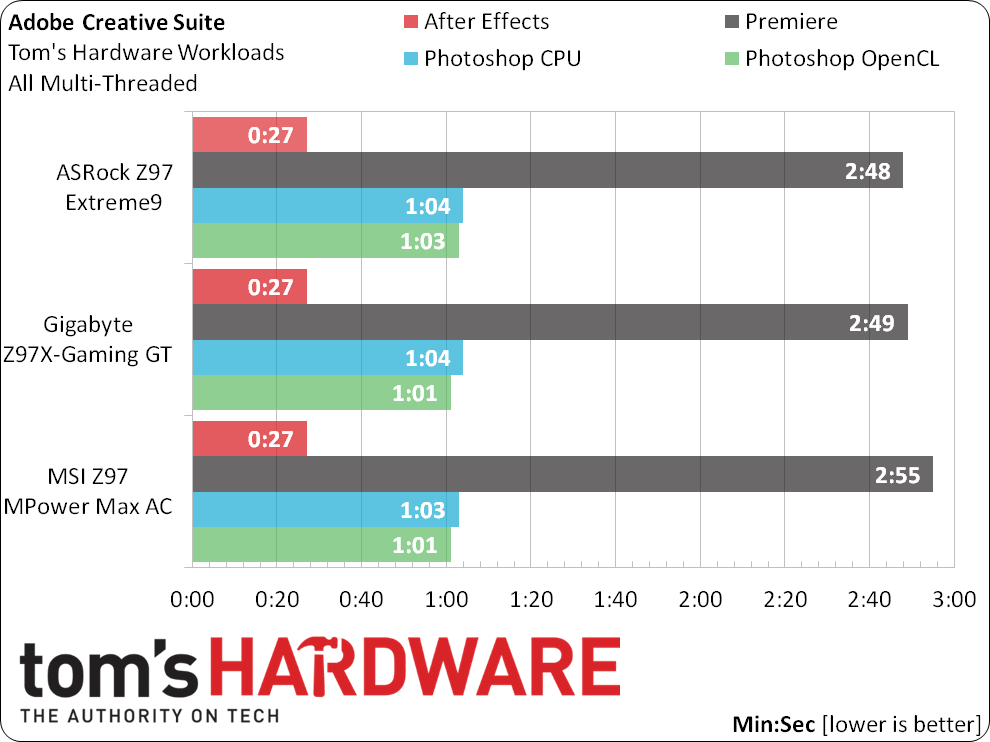
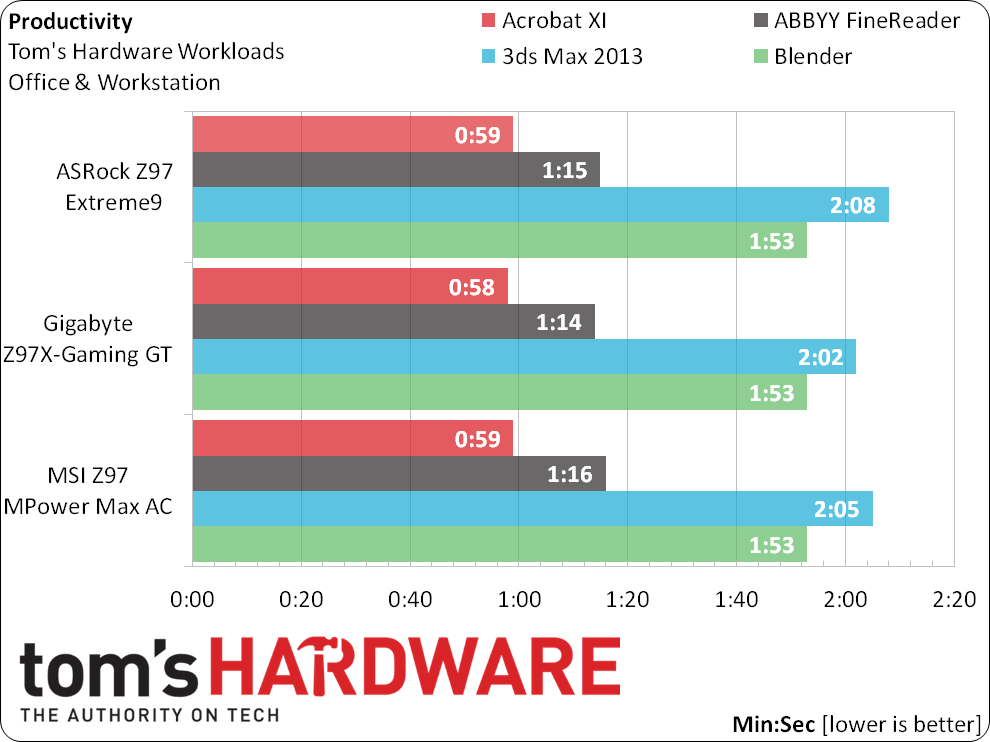

The same MSI motherboard that encountered a gain in one of our games also face an unexpected performance loss in one of our applications, Adobe Premiere. We rechecked the data to confirm its accuracy.
Get Tom's Hardware's best news and in-depth reviews, straight to your inbox.
Current page: Benchmark Results
Prev Page How We Test High-End Z97 Motherboards Next Page Power, Heat, Efficiency And Overclocking-
Nuckles_56 Damn, nice boards but really expensive. A pity about the i7 4790k not performing well, as I really wanted to see which board was best at OC'ingReply -
InvalidError Seems like somewhat of a shame to test boards with a PCIE switch using only a single GPU. How many enthusiasts who spend in the neighborhood of $300 on a motherboard would settle for a single-GPU setup?Reply
This needs a follow-up with x16x16 PEX vs x8x8 native vs x16x16 LGA2011 and, hopefully, x8x8x8x8 PEX vs x16x8x8x8 native on LGA2011. -
jtd871 On-board wifi is simply a waste of space and power (and probably available pcie bandwidth) - even for mITX mobos. Wireless specifications change too frequently to get locked in to whatever is on your mobo. USB dongles are easier to upgrade/replace and allow more flexibility with respect to antenna placement.Reply
If you really can afford 3 GPUs, you should really be starting with X99. For Z97, full-size ATX boards are kind of a waste due to the limit on available PCIe lanes, unless you want just 1 GPU and a bunch of other 1-2-lane expansion boards. I would have preferred seeing what you can get in a uATX (or possibly mITX) solution for the same budget in a package that's arguably a better fit to cater to the SLI/CF crowd and easier to fit in a case. -
envy14tpe Love to see things at their full potential, but can we include a i5-4690k for comparison? Many people don't need what the i7 offers and would love to see how the i5 overclocks and performs on these motherboards.Reply -
rolli59 Really when it comes down to that class of boards and money is no issue, the question is; is your color theme, red, yellow or blue?Reply -
SessouXFX Anodized Gold. :PReply
That one MSI board...I hope that price isn't accurate, that they're currently out of stock or something else is going on, as in, it's being shipped from S. Korea... -
fl-gators-fan Very nice to see the Gigabyte Gaming GT coming out ahead, as that's the board I'm using. I've had it for about 2 months with the I7-4790K and haven't even tried overclocking yet. The 4.0 GHz is plenty fast for all I do :)Reply -
Gurg So this indicates that for what it costs to try to dress a 4790k up, you will spend at least as much as a higher performing 5820k.Reply -
InvalidError Reply
While the motherboard and CPU may cost about the same, you also need to throw in an extra $100 for DDR4.14541735 said:So this indicates that for what it costs to try to dress a 4790k up, you will spend at least as much as a higher performing 5820k.
